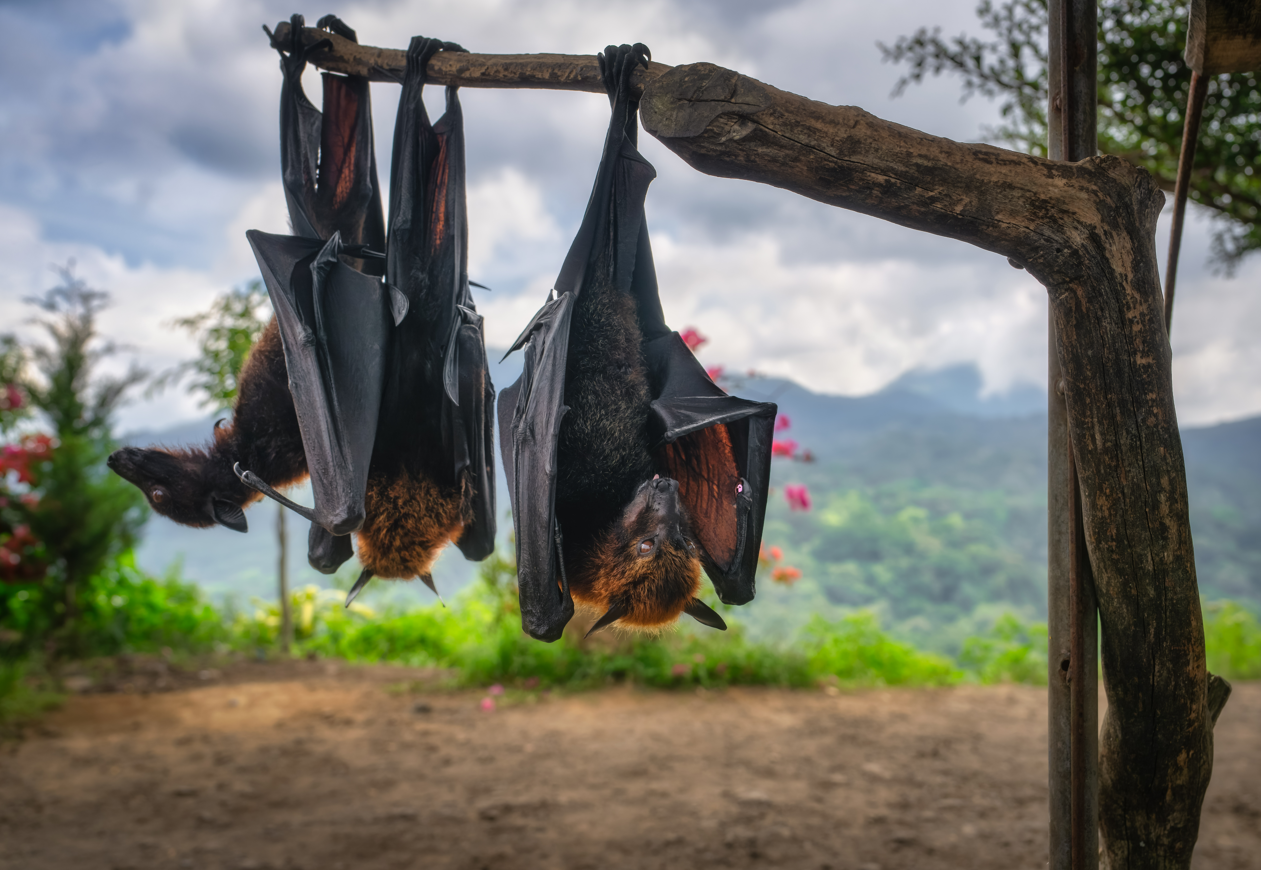Flying foxes are some of the largest bats in the world. With a body the size of a cat and a wingspan that would make an eagle envious, these megabats are an incredible example of how mammals have developed a variety of adaptations to conquer the skies.
Scientifically known as Pteropus, flying foxes are a genus of megabat that includes dozens of species. They all live in a giant portion of the planet stretching from East Africa across the Indian Ocean, through South and Southeast Asia, down to Australia and some Pacific islands.
Most of them share some distinct similarities, not least their significant body mass, but also their dog-like faces and glossy eyes. Unlike many of their smaller cousins, flying foxes don’t use echolocation, instead relying on their keen eyesight and sense of smell to guide them through the twilight in search of food.
Also unusual among bats, flying foxes are largely herbivorous, feeding on nectar, blossoms, and ripe fruit. In the process of darting between plants, they play a vital role in their ecosystems, acting as pollinators and seed dispersers for countless plants. Even the infamously pungent durian, the world’s most divisive fruit, depends on these megabats to reproduce.
It’s little surprise, then, that they’ve earned their more familiar nickname: fruit bats. A high sugar diet would not be advisable for most animals, but flying foxes have evolved a super-charged metabolism that’s able to rapidly lower their blood sugar levels, preventing them from getting diabetes and other metabolic diseases.

There are an estimated 65 species of flying foxes, nearly half of which are facing conservation problems.
Image credit: Dawid K Photography/Shutterstock.com
Flying foxes are naturally shy and tend to avoid human contact, far more inclined to flee than to fight. That said, they can carry viruses that can be deadly to humans, such as the Hendra virus, which occasionally spills over from the flying-fox population into horses, and in rare cases, to humans.
The giant golden-crowned flying fox (Acerodon jubatus) is widely cited as the largest of all bats on Earth, with an average wingspan of over 1.5 meters (5 feet) and weighing around 1.3 kilograms (3 pounds). This species was once classified under the genus Pteropus. Although it has since been put into another genus of megabat, Acerodon, it shares many physical traits with Pteropus.
These bats are native to the lowland forests of the Philippines, away from human activity. Here, they form vast communal roosts in the trees, sometimes alongside other species, such as the equally impressive large flying fox (Pteropus vampyrus).
From the tiny bumblebee bat, light enough to balance on a fingertip, to the giant golden-crowned flying fox with wings broad enough to blot out the sun, many of these species are facing threats to their existence. A study in 2017 found that nearly half of all flying fox species (31 species) are close to disappearing forever, especially those native to islands that are becoming increasingly infringed upon by humans.
Source Link: Flying Foxes Include The World's Biggest Bat And The Largest Mammal Capable Of True Flight